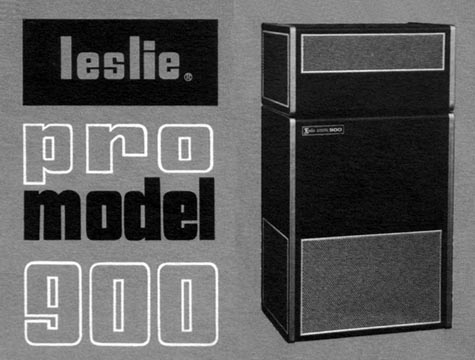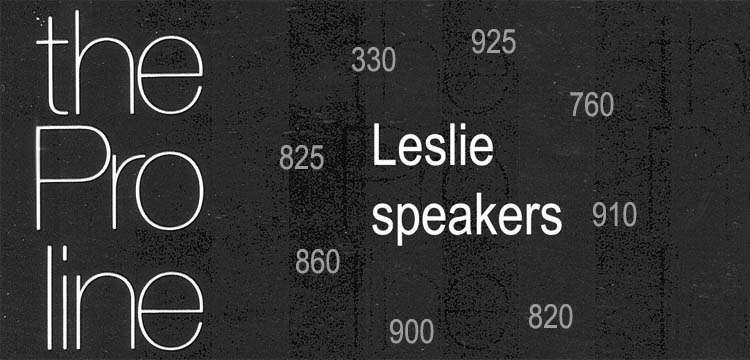|
|
|
|
Introduction This essay is the third or
fourth generation of the ProLine Leslie pages dating back to my
original '760 zone' page from 1997. Time flies when you are having fun and
apparently nothing better to do than write about Leslie speakers 8o)
The chapters in
this new version of the ProLine pages are: This intro page, the 760 and
770, the 330 and 860, the 900-series, the 825 and 820. I may add a final
chapter about the later ProLine speakers such as the 815. As usual, pictures or other materials is always accepted and will be
credited on the pages (unless you don't want me to).
Enjoy! -Lars
Mikael |
|
ProLine History 101 The tolex-covered Leslie model PRO 900 was introduced in 1969 and was the first in a long line of Leslie speakers made for the stage use. The 900 and its follow-ups were made to be more portable, louder and have more power than traditional Leslie speakers. The ProLine speakers evolved over time (and were in fact not officially called ProLine speakers until the mid 70's, except for the original PRO 900) and they all shared basic design features:
|
Technically speaking It is believed that the PRO 900 was an invention of the CBS corporation who had acquired Electro Music from Don Leslie some years prior. However, the solid state amplifier design was a Don Leslie creation. By today's standards this design, with its inter-stage transformers and electrolytic capacitors in the signal path, seems antiquated but back then it was a highly advanced amplifier that did exactly what it was supposed to do: Make a Leslie sound like a Leslie. The solid state Leslie amplifier was tweaked and improved upon over the years, but the basic circuitry remained in place until integrated circuits replaced the discrete components in the late 70's. Along with the solid state amplifier for the sound (more on this later) came solid state motor switching. The ability to stop the rotor(s) was a standard feature.
|
ProLine TimeLine As far as I have been able to research, the time line for the Hammond-friendly ProLine Leslie models looks a bit like this: Year Model(s) introduced 1969 PRO 900 Concurrently with the Pro-type Leslie speakers, Electro Music issued new speaker models in both the traditional and 'decorator' cabinet designs featuring the new solid state technology. Some of these will be briefly mentioned in the following. |
 |
